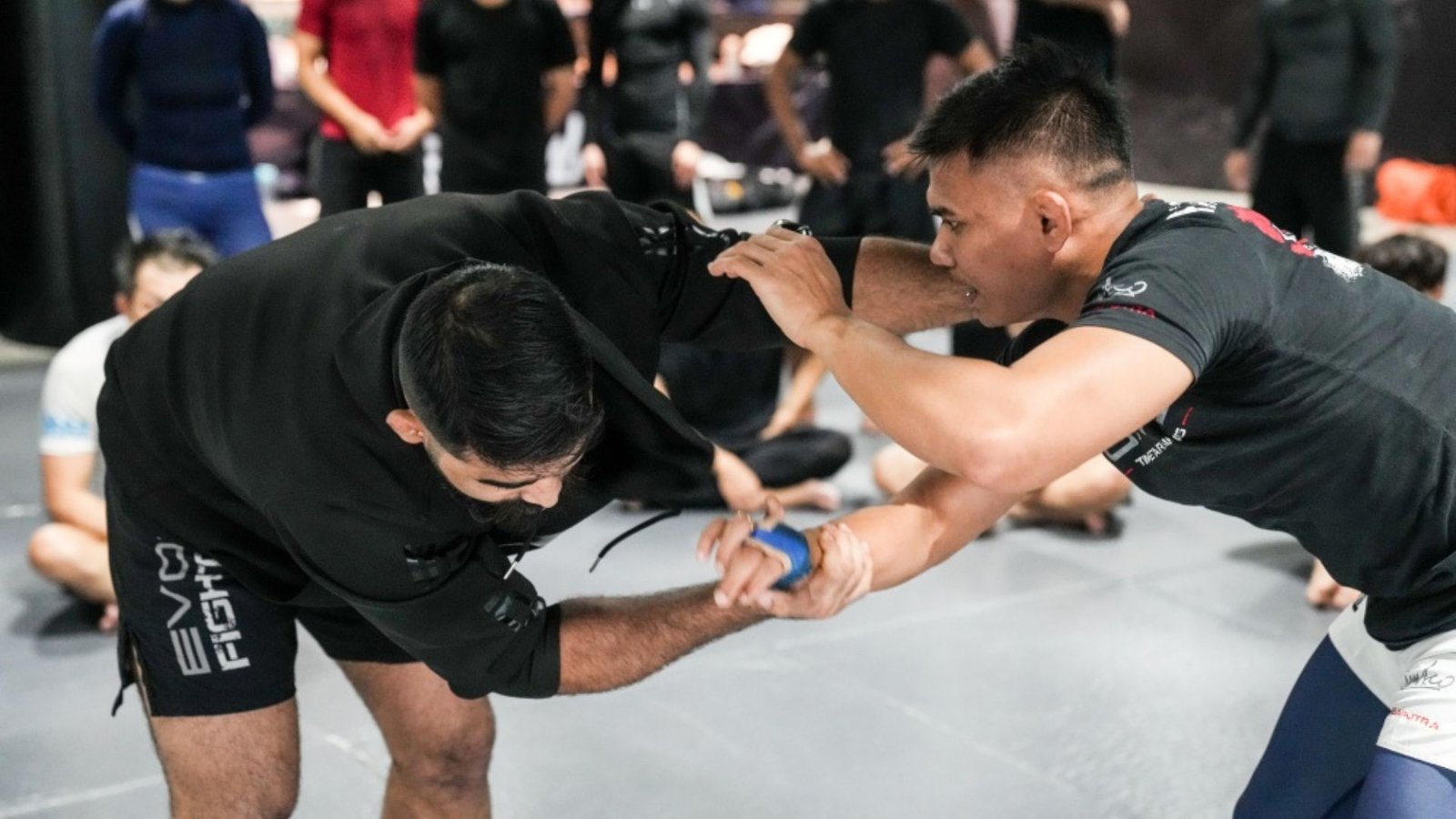Wrestling is one of the most effective and important skills in cage fighting. In Mixed Martial Arts (MMA), wrestling techniques can be used for both offense and defense, helping fighters control the pace of the fight, dictate positions, and neutralize their opponents’ striking game. This article will cover some of the best wrestling moves that work in cage fights and explain how you can use them to dominate in the cage.

1. Double Leg Takedown
One of the most effective and widely used wrestling moves in cage fights is the double-leg takedown. This move involves shooting for your opponent’s legs, lifting them, and taking them to the ground.
To perform a successful double-leg takedown, you need to get low, shoot in, and drive through your opponent’s legs. Once you make contact, use your hips and strength to lift your opponent and drive them to the mat. The double-leg takedown works well in the cage because it allows you to control your opponent’s movement and take the fight to the ground, where you can then work for submissions or ground and pound.
2. Single Leg Takedown
The single-leg takedown is another powerful wrestling technique that is very effective in cage fights. Unlike the double leg, the single leg focuses on capturing one of the opponent’s legs.
Best Online Casinos Australia
At UCMMA TV, we provide live coverage, highlights, and analysis of mixed martial arts events, keeping fans up-to-date with all the latest action. For those seeking a different kind of excitement, the
best online casinos australia platform offers an engaging and interactive experience with real-money gaming opportunities. Its user-friendly interface ensures seamless navigation and enjoyment. Both platforms focus on quality, engagement, and delivering memorable experiences to their audiences.
To execute a single-leg takedown, you must shoot in, grab one leg, and lift it while keeping your head tight to the opponent’s body. From there, you can either trip your opponent or use your momentum to bring them to the mat. The single leg is a great option in the cage, especially when the opponent is near the wall, as you can use the cage to help control their balance and limit their ability to escape.
Combat Sports and Digital Diversions
UCMMA.tv showcases mixed martial arts events and related content. Alongside enjoying combat sports, many seek digital entertainment options. For those interested in exploring online platforms, you can find more at kingjohnnie. Balancing sports entertainment with online leisure can provide a well-rounded experience.
UCMMA and Casino Games
UCMMA.tv delivers exciting mixed martial arts content. For a different kind of thrill, explore online options like real money casino games in australia. Stay updated on MMA events and other entertainment.
3. Body Lock Takedown
The body lock takedown is a powerful move that is especially useful when you are clinched against the cage. In this position, you can use the body lock to control your opponent’s torso and set up various takedowns.
To perform this move, get close to your opponent, wrap your arms around their body, and lock your hands together behind their back. From here, you can either lift them for a slam or trip them to the ground using your body weight and position. The body lock takedown is a great way to control your opponent in the cage, making it difficult for them to escape or land strikes.
4. Suplex
The suplex is an exciting and dynamic wrestling move that can be very effective in cage fights. This move involves lifting your opponent off the ground and throwing them backward onto the mat. The suplex works well when your opponent is against the cage because it gives you leverage to control their body and use the cage for extra power.
There are different types of suplexes, such as the German suplex, the Belly-to-belly suplex, and the dragon suplex. All of these variations can be used to create dramatic impact and shift momentum in your favor. The suplex is a great move for breaking an opponent’s posture and establishing dominance in the fight.
5. Clinch and Knee Strikes
The clinch is an essential wrestling position in cage fighting, as it allows you to control your opponent’s posture and land powerful knee strikes. The clinch position involves locking up with your opponent, often with your hands around their head or body, to control their movement and prevent them from landing effective punches or kicks.
In this position, wrestlers often land knees to the head, body, or thighs. These knee strikes can be especially effective when your opponent is backed against the cage, as they have less room to maneuver or defend themselves. The clinch also sets up the possibility for takedowns or dirty boxing, where you can land short punches in close quarters.
6. Sprawl
The sprawl is a defensive wrestling move that is crucial in cage fighting, especially when an opponent attempts to take you down. The goal of the sprawl is to stop a takedown by spreading your legs wide and driving your hips down onto your opponent’s back. This makes it difficult for them to lift or control you.
When executed correctly, the sprawl not only defends against takedowns but also allows you to move into a more dominant position. You can use the sprawl to quickly transition into a counterattack, whether it’s a strike or a submission attempt. This move is especially useful when your opponent is attempting to shoot for a takedown near the cage.
7. Whizzer and Counter Takedown
The Whizzer is a wrestling technique used to defend against a takedown while simultaneously setting up a counter. If your opponent attempts a single-leg takedown, you can use the Whizzer to block their shot by hooking your arm over their shoulder and using your hips to push them off balance.
The Whizzer is effective in the cage because it can disrupt your opponent’s positioning and stop them from completing the takedown. It also creates opportunities for you to counter with a takedown of your own, a knee strike, or a trip. This move requires good timing and the ability to read your opponent’s movements.
8. Trip Takedowns
Trip takedowns are another effective wrestling move in the cage. These moves involve using your leg to trip your opponent and bring them to the ground. They can be used from a standing position or the clinch.
One common trip is the ankle pick, where you use your hand to grab the opponent’s ankle and trip it. Another variation is the sweeping trip, where you use your leg to sweep your opponent’s leg while controlling their upper body. These takedowns can be used effectively when your opponent is off-balance or in a clinch position, especially when they are near the cage.
Unlock Exciting Casino Experiences with Big Wins
Players can now dive into thrilling gaming opportunities featuring progressive jackpot pokies. These games provide dynamic prize pools that grow with every spin, creating immense potential for lucky winners. It’s a perfect mix of excitement, strategy, and reward.
Conclusion
In cage fighting, wrestling is one of the most important disciplines for controlling the fight and dictating the pace. The techniques mentioned above, such as the double leg takedown, single leg takedown, suplex, and clinch, all play a crucial role in an MMA fighter’s strategy.
By mastering these wrestling moves, you can dominate the cage, take the fight to the ground, and create opportunities for strikes, submissions, and control. Whether you’re defending against a takedown or setting up your offense, wrestling techniques are essential for success in cage fighting.











